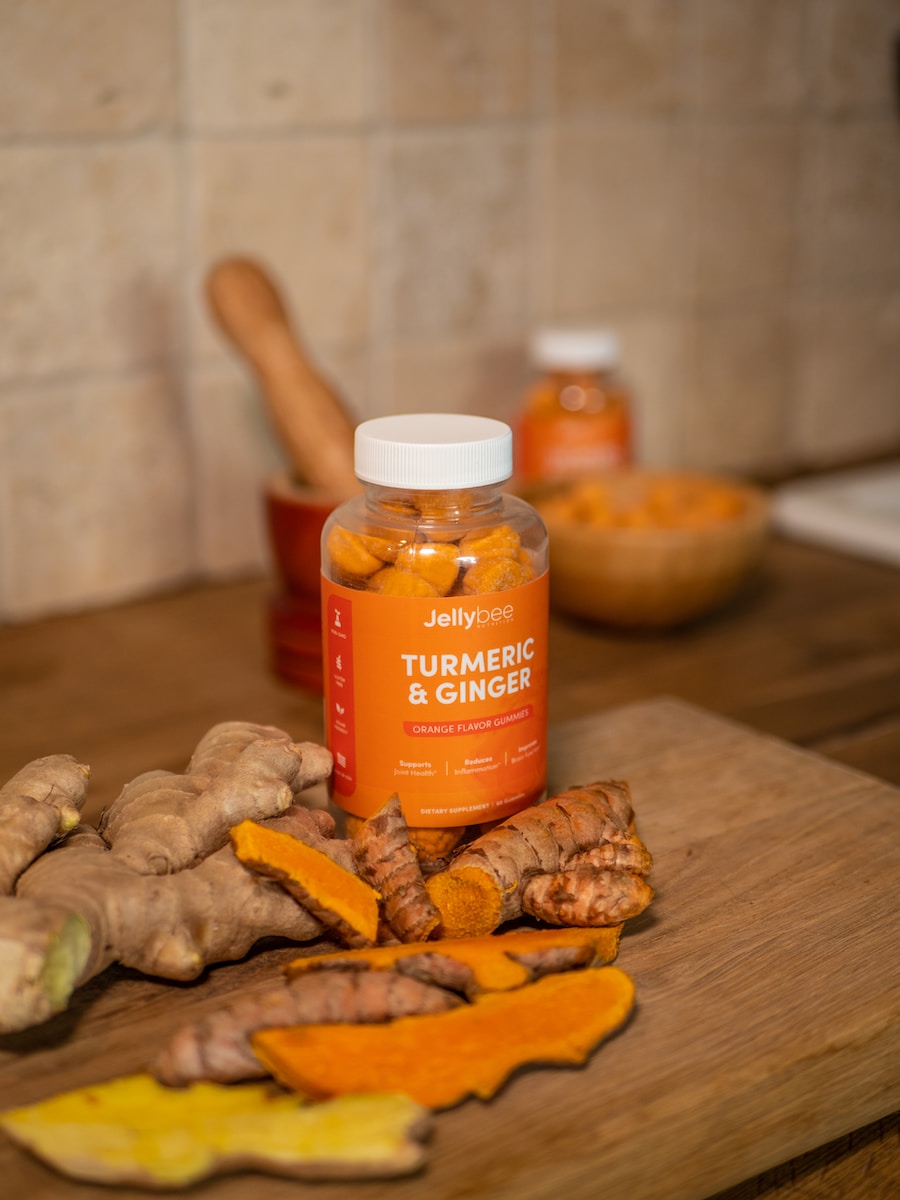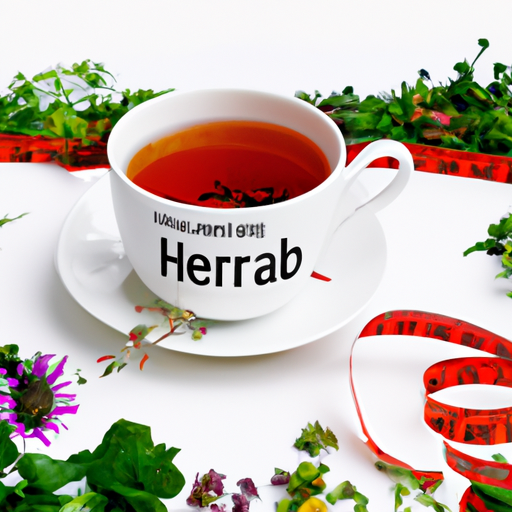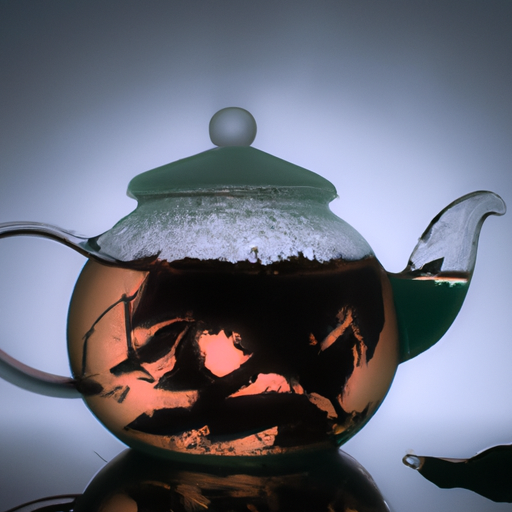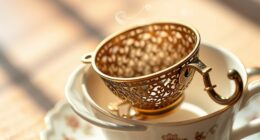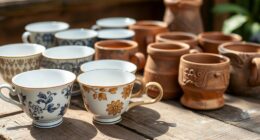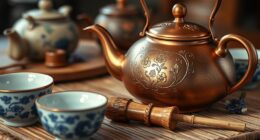Have you ever heard the expression, ‘A cup of tea solves everything’? Well, let me share with you that it’s more than just a saying. As a tea lover, I am convinced that a nice cup of herbal tea can calm the soul and invigorate the senses.
However, not all herbal teas are created equal, and sometimes, they can taste a bit lackluster. But fear not, my fellow tea lovers, for I am here to share with you my knowledge on how to make herbal tea taste better.
In this article, we will explore various techniques to elevate the flavor of your herbal tea. From choosing high-quality tea leaves or tea bags to experimenting with different herbal blends, we will leave no stone unturned. We will also delve into the world of fresh ingredients, natural sweeteners, and spices that can enhance the taste of your brew. And let’s not forget about the impact of filtered water and different brewing methods on the overall flavor.
So grab your favorite cup or mug, find a cozy spot, and prepare yourself for a tea experience like no other. Let’s unlock the full potential of herbal tea and savor every sip in a relaxing environment. Because life is too short for mediocre tea, my friends. Let’s make our tea taste better, one brew at a time.
Key Takeaways
- Choose high-quality tea leaves or tea bags for a rich and flavorful brew.
- Experiment with different herbal blends to explore new flavors.
- Enhance the taste by adding fresh ingredients like herbs and fruits.
- Use natural sweeteners and spices to elevate the flavor profile of herbal tea.
Choose High-Quality Tea Leaves or Tea Bags
When making herbal tea, it’s important to choose high-quality tea leaves or tea bags to ensure a rich and flavorful brew. The quality of the tea directly affects the taste and overall experience.
To enhance the flavor, I always opt for loose leaf tea instead of tea bags. Loose leaf tea offers a more robust and aromatic infusion as the leaves have space to expand and release their flavors fully.
One of the advantages of using loose leaf tea is that it allows you to experiment with different tea accessories. Tea infusers, tea balls, or even a simple strainer can add a touch of elegance to your tea-making process. These accessories not only make the brewing process easier but also enhance the flavor by allowing the tea leaves to steep properly.
Moreover, loose leaf tea offers a wider range of options to explore. With loose leaf tea, you can choose from an array of herbal blends, each with its own unique taste and benefits. Whether it’s refreshing peppermint, soothing chamomile, or invigorating ginger, the possibilities are endless.
By choosing high-quality tea leaves or tea bags and exploring the benefits of loose leaf tea, you can elevate the taste of your herbal tea. Now, let’s dive into the exciting world of herbal blends and experiment with different flavors and combinations.
Experiment with Different Herbal Blends
By experimenting with various herbal combinations, you’ll stumble upon delightful new flavors that’ll surprise your taste buds.
Herbal tea offers a wide array of options, each with its own unique taste and benefits. Whether you prefer a calming chamomile blend or a refreshing mint infusion, there are countless combinations to explore. Mixing different tea blends allows you to create a personalized flavor profile that suits your preferences and needs.
One benefit of herbal tea is its ability to support overall well-being. For example, a blend of ginger and turmeric can provide anti-inflammatory properties, while a combination of lavender and chamomile promotes relaxation and better sleep. Another advantage is the variety of tastes that can be achieved by mixing different herbs. You can create a blend that’s sweet and floral, or one that’s bold and invigorating.
When experimenting with different tea combinations, it’s important to keep in mind the desired health benefits and flavors you’re seeking. Some herbs may complement each other well, while others may clash and create an unpleasant taste. Start with small batches and adjust the ratios of each herb until you find the perfect balance.
As you explore different herbal blends, you’ll discover exciting new flavors that’ll enhance your tea-drinking experience. However, if you’re looking to add even more natural flavor to your cup of herbal tea, the next section will guide you through the process of incorporating fresh ingredients.
Add Fresh Ingredients for Natural Flavor
To enhance the richness of your cup, infusing fresh ingredients adds a natural burst of flavor to your herbal blends. Here are three ways to elevate the taste of your herbal tea:
-
Pairing herbal teas with complementary foods: Just like wine and cheese, herbal teas can be paired with foods to enhance their flavors. For example, a floral chamomile tea pairs perfectly with a slice of lemon cake, while a mint tea complements dark chocolate. Experiment with different combinations to find your perfect match.
-
Using herbal teas in homemade cocktails or mocktails: Herbal teas can add depth and complexity to your favorite beverages. Try steeping a fruity hibiscus tea and mixing it with sparkling water and a splash of lime for a refreshing mocktail. Or infuse a herbal blend into a gin-based cocktail for a unique twist. The possibilities are endless!
-
Adding fresh herbs and fruits to your brew: Elevate the taste of your herbal tea by adding fresh herbs like basil, rosemary, or thyme. You can also experiment with sliced fruits like citrus, berries, or even cucumber for a refreshing twist. These natural ingredients not only enhance the flavor but also add a visual appeal to your cup.
By incorporating these techniques, you can take your herbal tea experience to a whole new level. Next, let’s explore how to sweeten your brew with natural sweeteners.
Sweeten with Natural Sweeteners
Enhance your herbal brew with the natural sweetness of honey, agave nectar, or maple syrup. Using alternative sweeteners can elevate the flavor of your herbal tea and create a delightful taste experience.
These natural sweeteners not only add sweetness but also bring their unique flavors to the brew, allowing you to explore different flavor combinations and create your own signature blend.
Honey is a popular choice for sweetening herbal tea due to its rich, aromatic taste. It adds a subtle floral note that complements various herbal flavors. Agave nectar, derived from the agave plant, offers a milder sweetness with a hint of caramel undertones. It blends well with herbal teas and imparts a smooth, velvety texture. Maple syrup, with its distinct earthy and sweet flavor, pairs wonderfully with herbal teas, especially those with warm and woody notes.
When using alternative sweeteners, it’s important to experiment with different quantities to find the perfect balance. Start with a small amount and gradually add more if desired. By incorporating these natural sweeteners, you can enhance the flavor of your herbal tea and create a delightful infusion that satisfies your taste buds.
Now, let’s explore how to further enhance the flavor with spices and create a truly exceptional herbal tea.
Enhance the Flavor with Spices
Discover a world of tantalizing flavors by infusing your herbal brew with a medley of aromatic spices, creating a truly exceptional tea experience. Spices not only add depth and complexity to your cup of tea, but they also provide a myriad of health benefits.
Here are some spices that you can use to enhance the aroma of your herbal tea:
-
Cinnamon: This warm and sweet spice adds a comforting note to your tea. It pairs well with herbal blends like chamomile and rooibos, giving them a touch of warmth and sweetness.
-
Ginger: Known for its spicy and invigorating flavor, ginger adds a zesty kick to your tea. It goes particularly well with herbal teas that have a citrusy or fruity base, such as lemon verbena or hibiscus.
-
Cardamom: With its distinct and aromatic taste, cardamom lends a unique flavor to your tea. It pairs beautifully with herbal blends that have a floral or earthy undertone, like lavender or mint.
-
Cloves: These tiny spice buds bring a warm and slightly sweet taste to your tea. They complement herbal blends that have a spiced or woody profile, such as chai or blackberry sage.
By incorporating these spices into your herbal tea, you can elevate its flavor profile and create a delightful sensory experience. Once you’ve added your desired spices, it’s time to brew the tea at the right temperature and time, ensuring that every sip is perfect.
Brew the Tea at the Right Temperature and Time
Enhancing the flavor of herbal tea with spices is a fantastic way to add depth and complexity to your brew. But before we delve into the world of spices, let’s talk about the importance of brewing the tea at the right temperature and time.
The temperature at which you steep your herbal tea can greatly impact its taste. Different herbal teas require different temperatures to bring out their unique flavors. For delicate herbal blends, like chamomile or lavender, a lower temperature of around 175°F is ideal. This ensures that the delicate floral notes aren’t overwhelmed by the heat. On the other hand, heartier herbal teas, like ginger or cinnamon, can withstand higher temperatures of around 200°F, allowing their robust flavors to shine through.
In addition to temperature, the steeping time is crucial for extracting the perfect taste from your herbal tea. Steeping for too short a time may result in a weak and watery brew, while steeping for too long can lead to a bitter and overpowering flavor. Generally, herbal teas require a steeping time of 5-7 minutes, but it’s always a good idea to follow the instructions on the tea packaging for the best results.
Now that we’ve covered the brewing tips, let’s move on to the next essential step: using filtered water for optimal taste.
Use Filtered Water for Optimal Taste
To truly elevate your brewing experience, make sure you’re using filtered water for an unparalleled depth of flavor and complexity in your cup.
When it comes to making herbal tea taste better, the quality of water you use plays a crucial role. Filtered water, instead of tap water, can make a noticeable difference in the taste of your tea.
Using filtered water for brewing herbal tea has several advantages. Firstly, it helps remove impurities and contaminants that can affect the flavor and aroma of your tea. Tap water often contains chlorine, which can give your tea a slightly chemical taste. Filtered water, on the other hand, is free from these unwanted elements, allowing the true flavors of the herbs to shine through.
Additionally, filtered water has a neutral pH level, which is ideal for extracting the full range of flavors from the herbs. Tap water can sometimes be too alkaline or too acidic, resulting in a dull or bitter taste in your tea.
Using filtered water for brewing herbal tea is essential if you want to enhance the taste and experience. The quality of water you use can greatly affect the flavor and complexity of your cup. Experiment with different brewing methods to discover your perfect infusion.
Experiment with Different Brewing Methods
When it comes to brewing herbal tea, I’ve found that experimenting with different methods can make all the difference in taste.
One method I love is cold brewing, which involves steeping the tea in cold water for several hours. This creates a smooth and refreshing flavor that’s perfect for hot summer days.
Another method I enjoy is infusing the tea with fruit or herbs overnight. This not only adds a burst of natural sweetness but also enhances the aroma and overall experience of drinking herbal tea.
So don’t be afraid to get creative and try out these brewing methods to elevate your tea-drinking experience.
Cold Brew
For a refreshing twist, try cold brewing your herbal tea to bring out its natural flavors. Cold brewing is a great way to extract the delicate flavors of the herbs without the bitterness that can come from hot brewing. One of the benefits of cold brew is that it is less acidic than hot brew, making it easier on the stomach. Cold brew also tends to have a smoother and more mellow taste compared to hot brew.
To cold brew your herbal tea, simply combine your tea leaves or tea bags with cold water in a pitcher or jar, and let it steep in the refrigerator for at least 4 hours or overnight. The longer you steep, the stronger the flavor will be.
Transitioning into infusing the tea with fruit or herbs overnight, you can take your cold brew to the next level by adding slices of fresh fruit or herbs to the mixture. This will infuse the tea with a subtle hint of flavor and create a truly refreshing and aromatic beverage.
Infusing the Tea with Fruit or Herbs Overnight
Infusing the tea with fruit or herbs overnight adds a subtle hint of flavor, creating a truly refreshing and aromatic beverage that will leave you wanting more. And did you know that adding fruit to your cold brew can increase its antioxidant content by up to 20%?
To enhance the aroma and add a citrus twist to your herbal tea, consider infusing it with fruits like lemon, orange, or grapefruit. The natural oils in the citrus fruits will infuse into the tea, creating a bright and zesty flavor profile. Additionally, you can experiment with adding herbs like mint, basil, or lavender to create a more complex and intriguing taste.
By allowing the tea to infuse with the fruit or herbs overnight, you give the flavors plenty of time to meld together, resulting in a well-balanced and delicious brew. The longer infusion time also allows the tea to absorb the aromas of the fruit or herbs, making each sip a delightful sensory experience.
To serve the tea in the right type of cup or mug, consider using a clear glass or a ceramic mug with a wide opening. This will allow you to fully appreciate the color and aroma of the infused tea, enhancing your overall enjoyment.
Serve the Tea in the Right Type of Cup or Mug
To enhance the flavor of your herbal tea, try serving it in a cozy mug that adds to the overall experience. The right type of cup or mug can make a significant difference in how your tea tastes and how much you enjoy it. When choosing a mug, consider the material it is made from. Ceramic or porcelain mugs are excellent options as they retain heat well and add a touch of elegance to your tea-drinking experience. Avoid using metal or plastic mugs as they can alter the taste of your tea.
In addition to choosing the right mug, it is also important to pay attention to the temperature of your tea. Herbal teas are delicate and can easily be oversteeped or become too cold. Investing in a good quality teapot with a built-in infuser can help you control the brewing time and ensure that your tea is served at the perfect temperature.
To further enhance your tea-drinking experience, create a relaxing environment. Find a comfortable spot, perhaps near a window with a view or in a cozy corner of your home. Set the mood with soft lighting and soothing music. Taking the time to savor your herbal tea in a calm and tranquil setting will not only make it taste better but also help you unwind and enjoy a moment of peace.
Enjoy the Tea in a Relaxing Environment
Creating a serene and calming atmosphere while enjoying your cup of tea can enhance the overall experience. It’s not just about the taste of the tea, but also the environment in which you savor it. To truly enjoy your herbal tea, it’s important to create a space that promotes relaxation and tranquility.
Here are some tips for creating a calming atmosphere while sipping your herbal tea:
-
Choose the right tea accessories: Use a teapot or teacup that brings you joy. Opt for delicate porcelain or elegant glassware that enhances the visual appeal of your tea.
-
Find a cozy spot: Create a comfortable nook where you can fully relax and unwind. Add soft cushions, blankets, or even a comfortable chair to make your tea-drinking experience even more enjoyable.
-
Set the mood with lighting: Soft, warm lighting can create a soothing ambiance. Consider using candles, fairy lights, or dimmed lamps to create a calming atmosphere.
-
Surround yourself with nature: Bring the outdoors in by incorporating plants or fresh flowers into your tea-drinking space. The natural elements can help create a sense of tranquility.
By following these tips and creating a calming atmosphere, you can enhance the enjoyment of your herbal tea. So, sit back, take a deep breath, and savor each sip in a space that promotes relaxation and serenity.
Frequently Asked Questions
Can I use regular tea bags instead of herbal tea bags?
Yes, you can definitely use regular tea bags instead of herbal tea bags to enhance the flavor of your tea. It’s all about alternative options and finding what suits your taste buds. Regular tea bags offer a wide range of flavors, from black to green to fruity blends, allowing you to experiment and find your perfect cup of tea.
Don’t be afraid to explore different options and cater to your flavor preferences.
How long should I steep the herbal tea for maximum flavor?
For maximum flavor intensity, the herbal tea should be steeped for the recommended time mentioned on the packaging. Steeping the tea for too long may result in a bitter taste, while steeping it for too short a time may result in a weaker flavor. It’s important to follow the instructions provided to ensure the perfect balance of flavors. The maximum steeping time ensures that the tea releases its full range of flavors, resulting in a rich and satisfying cup of herbal tea.
Can I use artificial sweeteners instead of natural sweeteners?
Using artificial sweeteners in herbal tea can be a double-edged sword. On one hand, they offer a convenient way to add sweetness without the calories. However, they lack the depth and natural flavor that comes with using natural sweeteners.
Artificial sweeteners can give a tea a chemically taste, detracting from the overall experience. It’s important to consider the trade-offs and find a balance that suits your taste buds and health goals.
Are there any specific spices that pair well with herbal tea?
Spices for herbal tea can greatly enhance its flavor and provide numerous health benefits. Some spices that pair well with herbal tea include cinnamon, ginger, cardamom, and cloves. These spices add warmth, complexity, and a hint of sweetness to the tea. Additionally, they have anti-inflammatory and digestive properties.
By incorporating these spices into your herbal tea, you can create a delicious and aromatic beverage that not only tastes better but also promotes overall well-being.
Does the type of cup or mug I use affect the taste of the herbal tea?
The type of cup or mug you use can indeed have an impact on the taste of your herbal tea. Different cup materials, such as glass, ceramic, or stainless steel, can subtly alter the flavor. Additionally, the size and shape of the mug can affect how the tea is distributed and how the aroma is released, ultimately influencing the overall flavor experience. Choosing the right cup can enhance your enjoyment of herbal tea, making each sip more delightful.
Conclusion
In conclusion, when it comes to making herbal tea taste better, the possibilities are endless. By choosing high-quality tea leaves or bags and experimenting with different blends, you can elevate the flavor to new heights. Adding fresh ingredients and sweetening with natural sweeteners will also enhance the taste. Enhancing the overall experience can be done by using spices and filtered water. Don’t forget to try different brewing methods and serve the tea in the perfect cup or mug. So go ahead, create your own little oasis of relaxation and indulge in the delightful world of herbal tea. Let your taste buds dance with joy!


